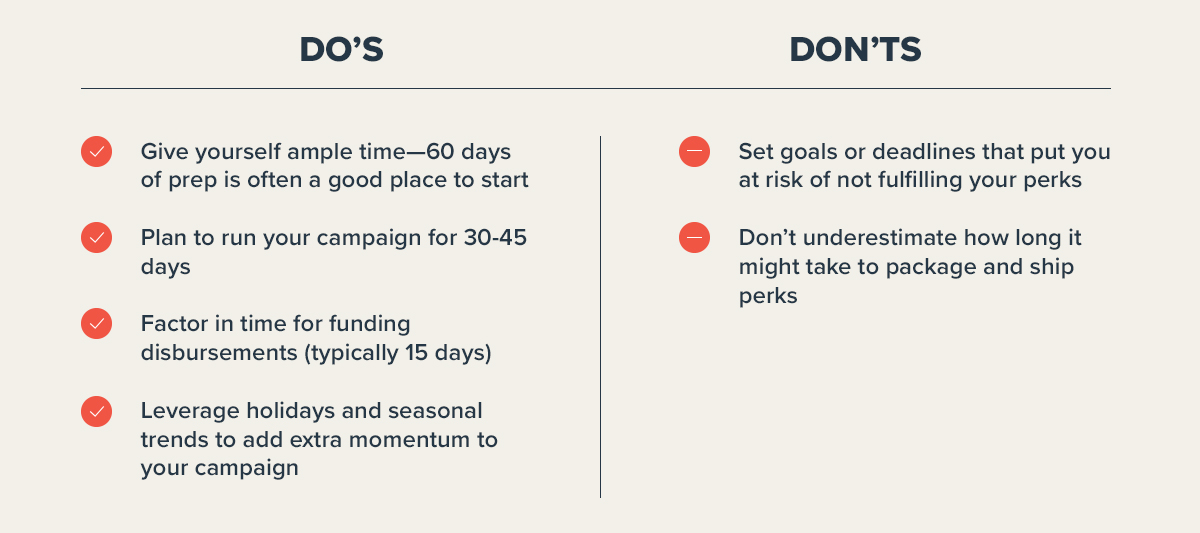For many early-stage startups, crowdfunding might seem like the golden ticket to raise much-needed funding in a short window of time. But savvy entrepreneurs know that the real benefit of a successful crowdfunding campaign isn’t just the money raised by the so-called crowd, but how the results can set your business up for the next round of funding from VCs and other investors.
But getting a pre-order campaign right is no cakewalk: it takes a lot of time, resources, and, ideally, experience capturing the attention of a large number of backers—often before you’ve built your actual product.
You need to create an effective crowdfunding campaign (also known as a pre-order campaign) that moves at lightning speed, proves your startup’s viability by bringing early adopters and loyal advocates on board, and builds an irresistible case for future funding.
GET IT NOW
There’s no one-size-fits-all approach to crowdfunding marketing, but there are a few basics you need to understand to succeed. Here are four key paths to a successful pre-order campaign launch, no matter what you’re bringing to market:
1. Determine the specific goals you want to achieve with your pre-order campaign.
Determining a set of shared goals might be the most important differentiator between a record-breaking crowdfunding campaign and a flop. Make sure you have set up the right set of goals by using the following checklist:
- Create a primary goal:Start by defining what exactly you hope to accomplish during your campaign. Are you trying to raise actual capital? Build a preliminary audience? Position your business to raise another round of funding from investors? It’s important to note that the goal of many successful crowdfunding campaigns isn’t the actual capital; instead, start-ups often use pre-order as part of their go-to-market strategy or to prove viability in order to secure the next rounds of venture capital funding.
- Identify your secondary objectives: Along with your overarching goal, you should also set a few secondary goals, from awareness goals around increasing traffic to your site, marketing goals that build a better foundation for the future like growing your email list, or general business goals like cultivating stronger relationships with investors. Remember that all of these objectives should be in service of your primary goal: raising more funding from VCs at a high valuation.
- Put your goals through the SMART framework:
- Specific: Are your goals detailed and straightforward, with everyone on the same page on what needs to get accomplished?
- Measurable: What evidence will prove you’re hitting your target and making progress?
- Attainable: Can you reasonably accomplish your goal within a given timeframe?
- Relevant: Are your goals aligned with your mission, your values, and your long-term objectives?
- Timely: Have you set a realistic, ambitious start and end date for your pre-order campaign?
- Track your progress: To track your campaign’s progress, you’ll need to set up the right processes to record and track your KPIs before the launch of the campaign and create a set of milestones to ensure that your campaign is moving in the right direction in a timely manner.
2. Pick the right pre-order path for your crowdfunding campaign.
There are plenty of crowdfunding platforms to choose from, including Kickstarter, IndieGoGo, Fundable, GoFundMe, and AngelList. While some are more generalized, others are specific to particular industries, verticals, and niches. If you’ve decided to take the pre-order route of using a platform, make sure to evaluate the pros and cons by asking yourself these questions:
- Does the platform require knowledge of CSS or HTML?
- Can investment pages be branded and customized to your organization?
- How long does it take for donations/funds to be processed?
- Does the platform integrate with your current CRM?
- Are social media features included?
- Will you have to give up a cut of your revenue to the platform?
On the other hand, more mature pre-order campaigns usually choose to build their own site due to the restrictions imposed by platforms that can impede marketing potential. If you have the funding, building your own site is the course we generally recommend. Here are some of the benefits of building your own funding platform:
- Personalized branding: A crowdfunding campaign hosted on your own website ensures you’re solely promoting your own brand rather than the crowdfunding platform.
- No percentage fee: Avoid the transaction fee that crowdfunding platforms typically take from your campaign.
- Quicker approvals: Most platforms require approval for your campaign, which takes time. Skip this step altogether when choosing to build your own site to host your crowdfunding campaign.
- More flexibility and control: You have full control over the customer experience through customized features and workflows.
3. Make your product (and company) truly stand out.
We’ve touched on goals and logistics, but now it’s time to play up your product. When you’re ready to launch your pre-order campaign, have more than just an idea at hand. If your project involves a physical product, consider having a working prototype to show off as an example to potential investors.
One standout example of a successful crowdfunding campaign is Kano, the famous PC-building kit that leveraged an accessible price point and a vision for the future to generate a massive pre-order campaign—one that resulted in over 20,000 preorders.
While your product is an important part of your pre-order campaign, there are also some other key ways you can boost the likelihood of success in your crowdfunding efforts:
- Highlight your brand using key messaging elements so visitors know exactly who they’re supporting
- Tell a compelling story that summarizes the problem you’re trying to solve and the noteworthy product that’ll serve as the solution
- Use photos and videos for emotional impact to dramatically increase the performance of your crowdfunding campaign
- Utilize your social networks to drive brand awareness and website traffic
4. Launch your pre-order campaign at the right time.
Once you’ve set your goals, chosen your crowdfunding platform, and evaluated your quality signals, it’s time to turn your attention to another important factor: the end date for your crowdfunding campaign. Keep in mind that It usually takes between 8 and 12 weeks of preparation before the official launch of your campaign. It all depends on the market niche, how complicated your product offering is, and what goals you hope to achieve.
Take a step back and list out some of your basic milestones clearly and chronologically. And don’t forget, by sticking to a carefully thought-out schedule, you give your investors more confidence in your offering. Happy backers = happy ambassadors. Here are some basic do’s and don’ts to follow while mapping out your timeline:<

Learn more about planning and executing an exceptional pre-order campaign by downloading the comprehensive Guide to Crowdfunding Marketing.







Responses